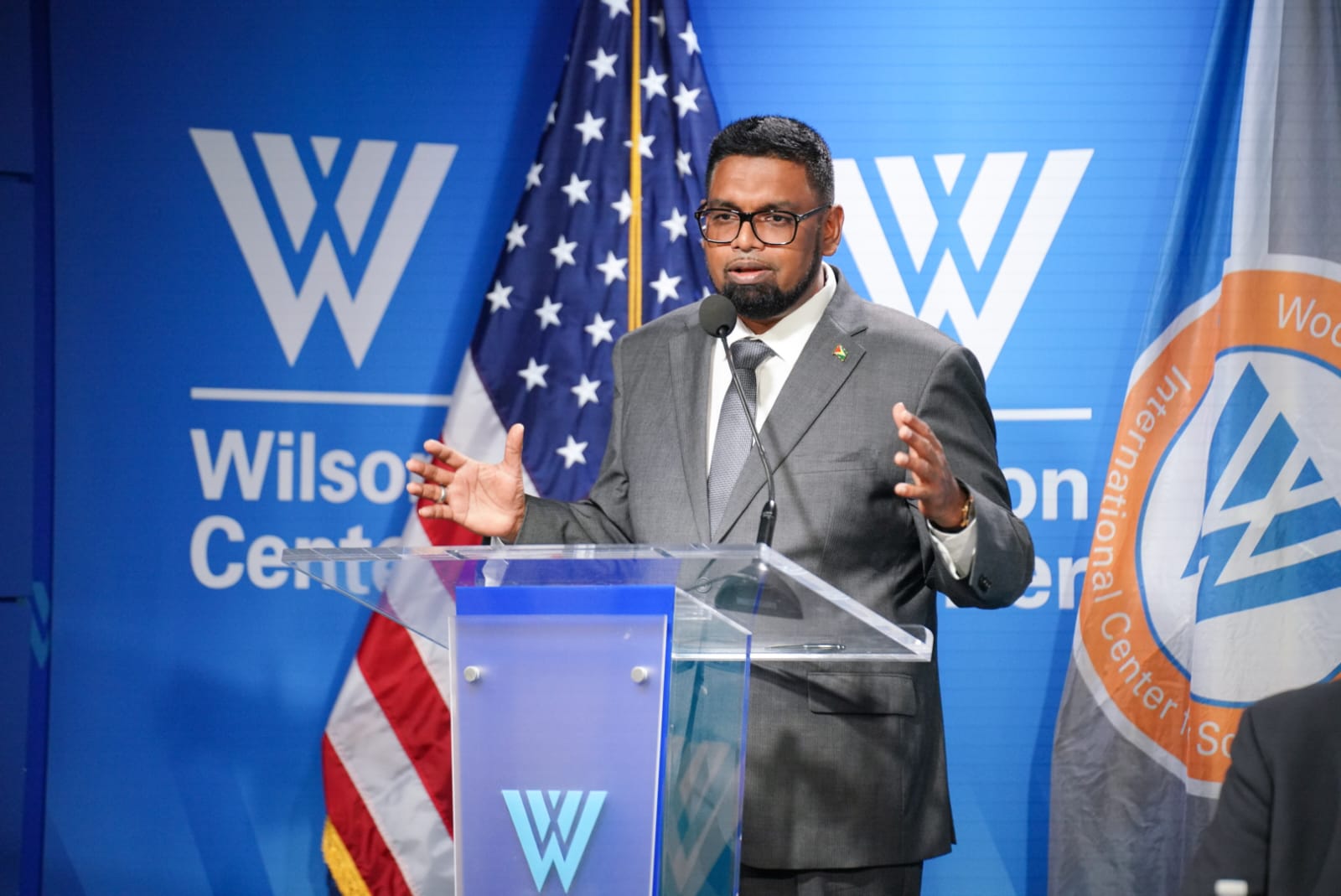With massive natural resource assets in the hydrocarbon sector and a passion to diversify and transform the economy, President Dr. Mohamed Irfaan Ali holds the position that Guyana’s oil can make the entire Caribbean region food secure.
During a meeting hosted by the Atlantic Council at the Adrienne Arsht Latin America Center, Washington DC on Monday, the President spoke of the heavy focus on agriculture and food security in the Caribbean Community (CARICOM) and outlined the union’s target of reducing the region’s food import bill by 25% by 2025.
He was quick to point out, however, that while Guyana has all the natural assets to be a leading food producer in the region, it lacks the appropriate technology and investment in infrastructure to ensure that the country’s agriculture is sustainable and resilient to climate change and the effects of climate change. He used this as the opportunity to encourage US companies to bring investments and technology with them to assist in this effort.
“That requires capital, and this is one example of how the revenues from oil and gas can be deployed to position Guyana, not only for the benefit of Guyana but to position Guyana to contribute significantly to the food security of the region as a whole,” the Head of State said during the first day of meetings with the US government.
According to a survey conducted by the United Nations World Food Programme (WFP) and CARICOM, an estimated 2.8 million people or nearly 40% of the population in the English-speaking Caribbean is food insecure. The COVID-19 pandemic and the ongoing Ukraine – Russia War have only compounded the issue, as supply chain, manufacturing and logistics services continue to be disrupted.
Guyana recognises this and has already moved to expand the country’s agriculture sector. The nation has already pursued corn and soya bean production and is moving to develop lands for agricultural purposes all across the country. In its Low Carbon Development Strategy (LCDS) 2030, the government has committed to using revenues from its rapidly growing oil and gas sector to boost agriculture and other traditional sectors, setting targets for itself to introduce the production of wheat, as well as high-value crops like broccoli, kale and others.
Expanded low carbon strategy tabled after months of consultations | OilNOW
Importantly too, LCDS 2030 supports building climate-resilient agricultural practices as the climate continues to deteriorate globally.
Meanwhile, the President and his delegation, which includes Vice President Dr. Bharrat Jagdeo, met with US Deputy Secretary of Commerce Don Graves and US Secretary of State Antony Blinken, to discuss a range of other issues on the opening day of the visit. These included climate change, security in Guyana and the rest of the region, energy security and the debt crisis.
The Guyanese Head of State reiterated that the United States is a “valued partner” and that the two countries share a “special relationship” and common views on critical issues.
Against this, he related, “The US has always been very supportive of the growth and development of our country, and more recently, the US has been very instrumental and supportive in ensuring that democracy prevailed in our country, and that came about because of the fundamental value system of the US.”
Dr. Ali also spoke of the relationship between the private sectors of both countries, their contribution to Guyana’s development through the involvement in various sectors including oil and gas, as well as the expansion of this cooperation to allow the US private sector to “play a greater role to go after great opportunities”.



